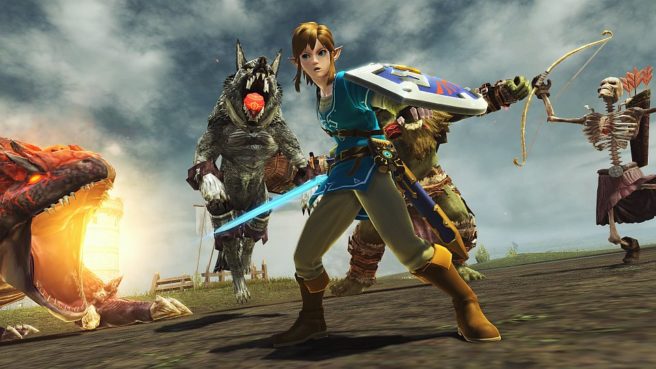Phantasy Star Online 2 devs on bringing the series back to Nintendo systems, cloud version, Link collaboration, more
Earlier in the year, Japanese magazine Nintendo Dream published an interview with Phantasy Star series producer Satoshi Sakai and director Keisuke Nakamura. The two participated in an interesting chat all about Phantasy Star Online 2 Cloud for Switch. They spoke about bringing the series back to Nintendo platforms after the decade, the decision to make the cloud version for Switch, working with Nintendo on the Link collaboration, and more.
We’ve readied a full translation of Nintendo Dream’s interview with Sakai and Nakamura. Continue on below to read it in full.
On Nintendo hardware for the first time in 10 years
Phantasy Star Online 2 is arriving on Nintendo hardware for the first time. How does that make you feel?
Sakai: The last time Phantasy Star game was on Nintendo hardware was in 2008 with Phantasy Star Zero, so it’s been a really long time. It’s a bit emotional. We did want to publish to a Nintendo console earlier, but the opportunity never really presented itself so I’m really glad it has now. Apart from just widening the reach of Phantasy Star Online 2, I think it’s quite meaningful.
Nakamura: There were a lot of complications, so first of all, I’m just glad that we managed. I’m excited that more users will be able to experience our service.
Why did you decide to publish for the Nintendo Switch?
Sakai: Phantasy Star Online 2 is a boundary breaking RPG so we wanted to expand it to as many platforms as possible. When you expand to a new platform you give many more people the chance to play your game, so we were searching for a solution to include Nintendo’s hardware. However, when you make a complete port, it adds certain hurdles to keeping the server running as well.
During that process we had an opportunity to introduce a cloud service, which is really exciting… on our end, there’s not a lot of extra burden put on the service and people are able to play using the latest updates right away.
Nakamura: Phantasy Star Online 2 has been running for close to six years so the game data itself is close to 60GB. So if a new player decides to join, they have to spend a lot of time on downloading. Compared to that, the cloud version is a mere 40MB. Even with the regular maintenance on Wednesdays, as soon as the maintenance is done, when you open the cloud version you’ll be up to date, so it’s really easy.
Sakai: We were quite interested in ‘cloud gaming’ itself so launching Phantasy Star Online 2 on the Nintendo Switch as a service has significant meaning to us.
It was a great opportunity and the Nintendo Switch is promising, so was a great time to appeal to a lot of new users.
Nakamura: The Nintendo Switch can also play in both portable and docked mode, so I think it’s great that you can play however you want.
When did you start work on the cloud version?
Sakai: We started last year. So we managed to get development started and the cloud version working at incredible speed… I think. That’s just around when the Nintendo Switch was launching so it was a great opportunity.
Making updates with the whole team
Is there anything specific to cloud games that you are struggling with?
Nakamura: Cloud games are sort of like a movie that you can play, so it’s there’s a limitation to how fast a response time you can get compared to a game that is downloaded locally. Phantasy Star Online 2 is an action RPG so if it takes a few seconds for a character to respond to a move that a player makes, they won’t succeed hence we spent a lot of time focusing on that area.
The circumstances are different, aren’t they?
Nakamura: Absolutely. It’s completely different to how we’ve been thinking about things up until now, when making applications that run directly on the machine. There were a lot of opportunities for us to learn how to things need to be done when making something for the cloud.
Have you taken any action specifically for new players?
Nakamura: As far as new players go, we check the player data weekly and analyze it for in terms of things like where newer players get stuck and keeping that data in mind discuss strategies with the episode 5 director Hamazaki and the series director Kimura.
It seems like the director is different for each episode, but are there sometimes meeting between directors?
Nakamura: Yes. We cover topics such as distribution content and development status in regular meetings.
Sakai: There is also the distribution of the planned future episodes and suggestions for improvement, but unfortunately we can’t do everything at once so we generally work things out while discussion how much to include.
Nakamura: For instance even if we feel like we want to provide content for newer players at a specific time, we can’t do everything so we have to rank by priority. (laughs) That’s how we decide what to include in each update distribution.
Do developers suggest ideas for areas other than what they themselves are working on?
Nakamura: Yes. In many cases the developers only know the content that they themselves are working on so every month we have a “All developers working on content for future distributions, let’s play” day. That’s where opinions like ‘”this is difficult to understand” and “this is boring” can be gathered and based on the decisions by the leaders and directors we can work out how to improve things, adjust schedules and fix issues.
Sakai: There are about 200 members so we want to give everyone a chance to catch up and understand everything that’s going on.
Nakamura: The cloud version has also been improved by these kinds of opinions.
